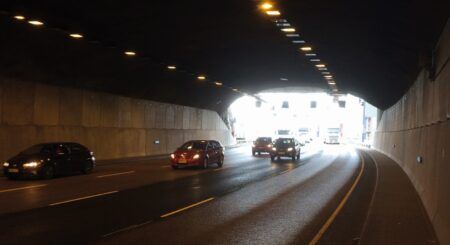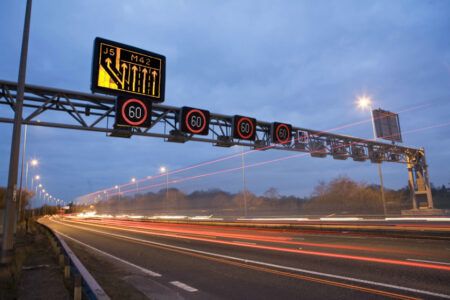The Colorado Department of Transportation (CDOT) and its contractors have completed the deployment of a new Fire Suppression System for the I-70 Eisenhower-Johnson Memorial Tunnels (EJMT) the longest mountain tunnel and highest point on the USA’s Interstate highway system.
Following the example set by highway departments in Europe and Australia, which have been updating their firefighting capabilities in tunnels in recent years, CDOT sought a system that would provide the greatest flexibility in suppressing different types of fires, and best protect the travelling public in its EJMT. Although the twin-tunnels are celebrating their 43rd year without a fatality occurring inside them, close calls have transpired and fires, primarily vehicular, do take place.
Despite having an excellent, up-to-date firefighting team on location in the tunnels 100% of the time, the department decided to take a further step in fire protection and detection. CDOT sought a partner to offer a solution and a design that would be affordable and least impactful to the more than 30,000 vehicles that travel each day through the twin, 1.7-mile (2.7km) long transportation tunnels near the top of Loveland Pass; the twin tunnels are two of the highest elevation transportation tunnels in the world.
In August 2014, CDOT awarded a design-build contract to Barnard Construction Co Inc. of Bozeman, Montana, which acted as the project’s prime contractor. The Barnard EJMT Team awarded this complex project included: the creative force of Rondinelli Life Safety/BCER Engineering, as fire protection engineer and lead design manager; ILF Consultants, as its civil and tunnel engineer; Western States Fire Protection, as fire protection installation subcontractor; and FAS Systems Group, as the fire detection controls engineer.
The team designed and constructed a new, comprehensive fixed fire suppression system (FFSS) within the existing tunnel structure. The FFSS was accompanied by a cutting-edge fire detection system and an integrated control system that is straightforward in its operation for CDOT personnel, as they continue to manage other aspects of tunnel maintenance and operations at the same time. The FFSS is a deluge fire suppression system that is capable of suppressing a large fire in the first two minutes of an event, and providing water for 60 minutes within two deluge sprinkler zones.
The team’s design used CDOT’s current overhead air plenum system, to minimize the amount of new construction required within the roadway space in the tunnels. The FFSS can provide first responders with the critical time they need to safely approach the scene and take action. It is a valuable tool in combating tunnel fires, keeping the public safe and protecting the tunnel structure, while minimizing disruptions to traffic.
“If we had to close down either one of those tunnel for an extensive period of time due to fire damage, it would have a big impact on the state’s economy, since this is the primary connection point between eastern and western Colorado,” said CDOT’s executive director, Shailen Bhatt. “In addition, having this system in place helps protect a critical feature of Colorado’s and the nation’s transportation infrastructure.”




